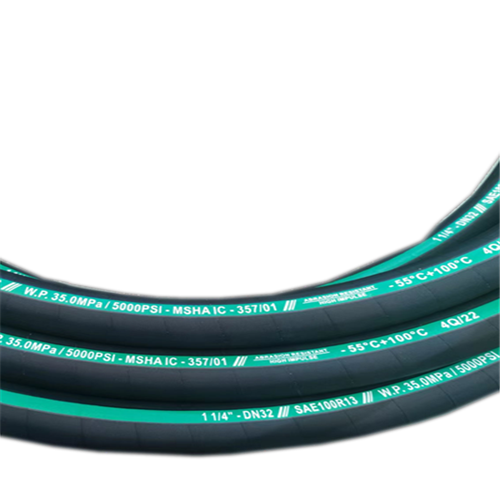335345435
Mar . 22, 2024 09:41 Back to list
High Temperature Hoses VS Low Temperature Hoses
The difference between high temperature hoses and low temperature hoses lies in the material and design, tailored to different working environments and application needs.

-
Material SelectionbetweenHigh Temperature Hoses and Low Temperature Hoses
High temperature hoses are typically made of heat-resistant materials such as silicone, fluororubber, or specialized high-temperature synthetic rubber. These materials exhibit excellent chemical stability and can withstand prolonged exposure to high temperatures. Due to the corrosive nature of liquefied petroleum gas (LPG) to some extent, LPG hoses are typically made of high temperature hoses resistant to chemical corrosion. In contrast, low temperature hoses utilize cold-resistant materials such as fluororubber or polyurethane, which maintain flexibility and elasticity even at extremely low temperatures without hardening or fracturing.
-
Temperature Rangeof Material Selectionbetween High Temperature Hoses and Low Temperature Hoses
High temperature hoses can withstand higher operating temperatures, typically ranging from 200°C to 500°C, with some specialty models capable of even higher temperatures. On the other hand, low temperature hoses have a temperature range usually between -50°C to -100°C, and some specialty models can operate at even lower temperatures. Some industrial hoses need to transport chemical solutions stored at low temperatures, for which low temperature hoses are used.
-
Structural Designbetween High Temperature Hosesand Low Temperature Hoses
High temperature hoses often feature a special structural design composed of multiple layers of heat-resistant materials to enhance heat resistance and pressure resistance. Low temperature hoses, in contrast, are designed to maintain flexibility and cold resistance, employing special material formulations and structural designs to ensure reliability in extremely cold environments.
-
Application Scenarios between High Temperature Hosesand Low Temperature Hoses
High temperature hoses are suitable for transporting liquids or gases in high-temperature environments, such as high-temperature steam transmission or gas emission from furnaces. Additionally, high-pressure washer hoses typically utilize high temperature hoses. Low temperature hoses, on the other hand, are employed in cold environments for applications such as cold storage, refrigeration equipment, or polar environments.
High temperature hoses and low temperature hoses differ in material selection, temperature range, structural design, and application scenarios. Users should select the appropriate type of hose based on their specific working environment and requirements.
-
LPG Hose for Sale: A Wholesaler’s Guide to Sourcing Safe and Profitable Solutions
NewsJun.23,2025
-
Rubber Pipes for Sale: A Wholesaler’s Blueprint for Sourcing Premium Industrial Solutions
NewsJun.23,2025
-
Hydraulic Hose Wholesale: A Wholesaler’s Playbook for Strategic Sourcing
NewsJun.23,2025
-
Power Washer Hoses for Sale: A Wholesaler’s Guide to Smart Sourcing
NewsJun.23,2025
-
Hydraulic Fittings for Sale: A Wholesaler’s Guide to Mastering Compatibility and Compliance
NewsJun.23,2025
-
Hydraulic Pipe Crimper for Sale: A Wholesaler’s Guide to Sourcing Premium Crimping Solutions
NewsJun.23,2025



